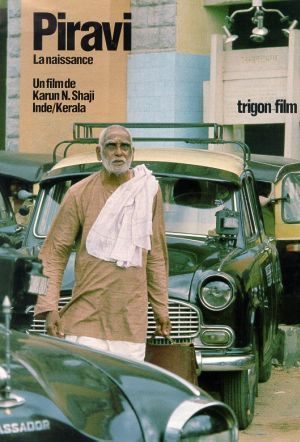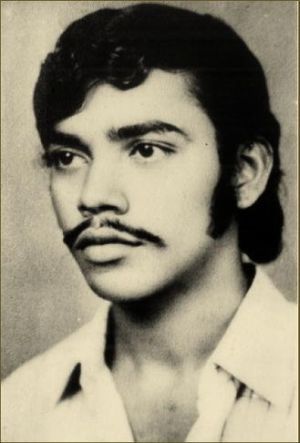
Rajeev Srinivasan tells how he came very close to being another number in the ‘disappeareds’ during the Emergency.
When I think of the Emergency, it is not the large matters such as the setting aside of the Constitution that I remember, but the ‘disappeareds’, one in particular. It was a forceful coming of age for us teenagers: I was a college student at the time. It marked a point of inflexion.
Growing up in middle class comfort, I had never come face to face with the State, except for minor scraps like being hauled to the police station for riding my bicycle without a proper lamp. Therefore, I had no idea about the predatory State. And to be honest, insulated as we were in the sylvan surroundings of IIT Madras, the Emergency didn’t affect me all that much to begin with.
I was, in other words, like other college students who were blasé about the Emergency. Like Rajan, the young engineering student at REC, Calicut (the ‘Rajan Case’, and the heartbreaking film Piravi based on it). He ‘disappeared’ after he made fun of the Congress chief minister of Kerala, who was sitting on the dais at a function -- but that was only in the age-old tradition of his story-telling Chakyar jati, who poked fun at the high and mighty in the courts of Travancore. Rajan was (possibly) also a Naxalite, or at least a leftist -- in those days, every young man wanted to be a buddhi-jeevi, an intellectual, with a sling-bag and a beard.
But Rajan disappeared forever, and according to his friends, who were also detained, he was probably tortured to death, the flesh on his legs destroyed with a wooden roller that policemen stood on while he screamed in pain, and later his body was burned with sugar to leave no trace.
His father, Professor Eachara Warrier, fought a lonely battle for the next 30 years till his own death, demanding that the State be accountable for what it did. Warrier filed a habeas corpus petition, demanding as a citizen that the State produce his son. But he was stonewalled, and the State never owned up to its guilt; and the chief minister lived to a ripe old age, outliving Eachara Warrier. One or two police officers were scapegoated, but their political masters were never touched.
I am strongly affected by Rajan’s story, because it could have been mine. When I saw the staggeringly powerful film Piravi, a fictionalised version of Rajan’s case, tears rolled down my cheeks -- I have never wept before or after at a film -- because of the aged father, who reminded me of my own. I wept because, but for the grace of God, I could have been Rajan. Rajan, Rajeev, how does it matter? Just another ‘disappeared’, some engineering student who dared to cross the line.
In the story of that one man, there lies the microcosm of the monstrous thing that the Nehru Dynasty did, only to keep itself in power. Rajan: a perfectly ordinary young man, in Piravi, he is never shown, only his presence (and his absence) as when his sister goes to clear out his hostel room: there is a single photograph -- a large portrait of his father.
His father was one of my heros, a hero for our times when a lone man’s quest for dharma reminds us of how evanescent life is, and often how unfair. Eachara Warrier did not seek revenge, but he wanted justice; which he never got. He is one man I shall never forget. Here is his testament, the shatteringly powerful story he wrote about his son, “Memories of a father” (external link). “Why are you making my innocent child stand in the rain even after he’s dead?” he asks, in one of the most moving works I have ever come across.
What a beautiful child, and to think what became of him!
 Somehow photographs become testaments; and this is Rajan's, image left. Years later, I went to Tuol Sleng, the notorious prison in Phnom Penh, Cambodia, where the Khmer Rouge systematically photographed thousands of their victims before executing them. There they are, row after row of them, those who were about to die, staring at the camera in black and white photographs. Each one of them was a Rajan.
Somehow photographs become testaments; and this is Rajan's, image left. Years later, I went to Tuol Sleng, the notorious prison in Phnom Penh, Cambodia, where the Khmer Rouge systematically photographed thousands of their victims before executing them. There they are, row after row of them, those who were about to die, staring at the camera in black and white photographs. Each one of them was a Rajan.
I came very close to being another number in that sorry ledger of the disappeared. For, we at IIT Madras did something that, in hindsight, was the height of foolishness, but we were too innocent to know it. In my days, the students were very co-operative with the management. There was even a staff strike that the students helped break, by manning the kitchens and taking over the janitorial and security duties.
But, during the Emergency, a new rule was put into effect: a tightening of the rules related to attendance. Hitherto, we had been required to be in class 66.6 per cent of the time, the rest accounting for everything else, sickness, inter-IIT meets, sports, whatever. That ratio was raised to 75 per cent with immediate effect. The students were shocked, partly because we believed that it was only poor teachers who suffered from bad attendance: so we demanded that a) either it be rolled back to 66.6 per cent, or b) it should be increased to 75 per cent only in conjunction with teacher evaluation by students.
I was one of the elected student representatives, and we went from hostel to hostel trying to convince our peers that this was a reasonable stance. Since the management refused to come to terms, we went on strike, and boycotted exams that were about to take place. The boycott was total: nobody wrote the exams, and it was a humiliating standoff for the management.
Then came a request to us to meet a central government official. About eight of us drove to one of those nondescript concrete blocks that housed government offices in Chennai. I don’t recall the time, but no, it was not that we were marched over there at midnight or terrorised. We were to meet a man who had the sinister title, ‘Emergency Administrator’, someone with the last name of Hande or Handa.
He was a polite, soft-spoken man, and he listened carefully to what we had to say. Then he sat back in his chair, and told us -- I remember being chilled to the bone at what he said -- that it would be better for us if we went back to class, and cancelled the strike. Think of your future, he said, he could put us ‘ringleaders’ in jail. Your careers will be ruined, and your friends will simply go back to their studies. He never said anything about our lives being ruined, but that was an unspoken subtext.
The enormity of the situation dawned on us only then. We were silent on the way back to campus. There we had a conclave, and we realized he was right: he had the power to destroy us, casually as though we were vermin, and there wasn’t a thing we could do about it, considering that we were all anonymous middle-class youths, not the offspring of high officers or industrialists. We knew no judges. We called off the strike.
That is why Rajan’s story resonates with me. I was this close to being him. That was my introduction to the real world. Much later, I went to San Francisco’s Gadar Memorial, and read up on the Nehru Dynasty, and realised that what I had naively assumed was a democracy was indeed a predatory State, unchanged from British times except for the skin colour of the king emperor.
Complete coverage: Democracy's darkest hour










